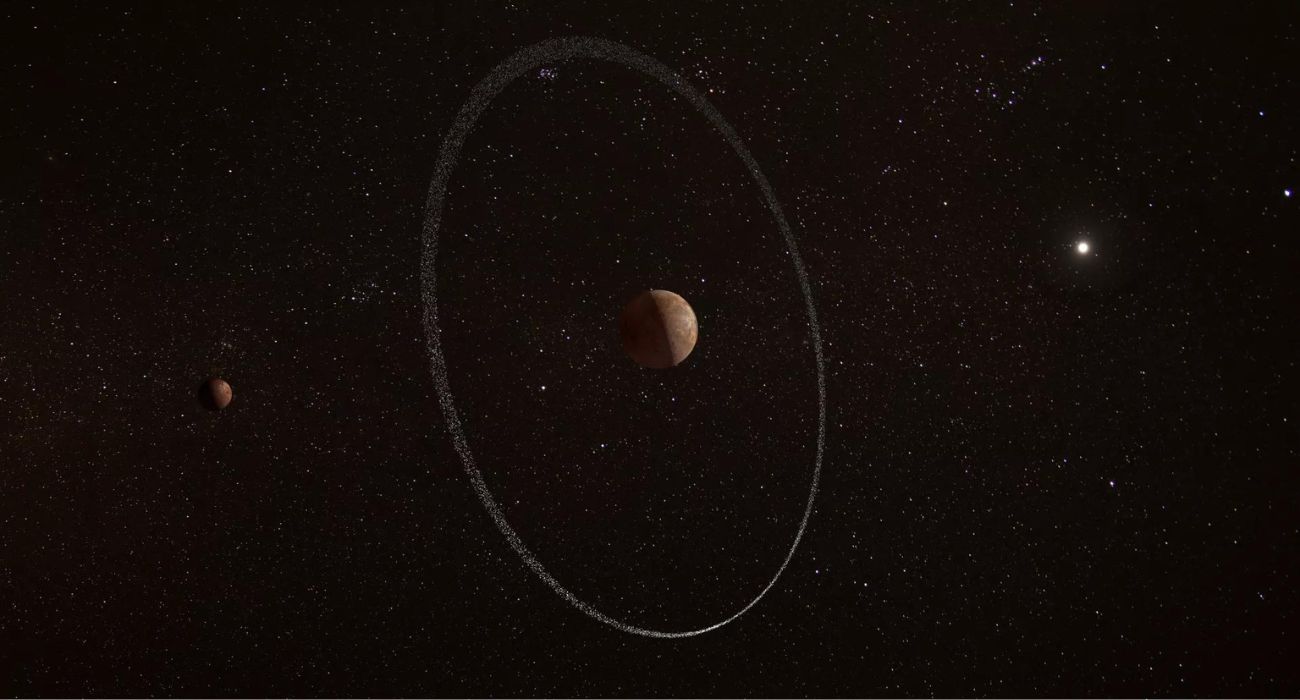Scientists have discovered a new “impossible” ring system around a dwarf planet.
Scientists discovered this ring system around Quaoar, a dwarf planet in the Kuiper Belt. The celestial body was discovered in June 2002 and is the largest known Kuiper belt object to date at 776 miles, half the diameter of former planet Pluto.
This object is the third smallest celestial object discovered to have a ring.
Scientists previously discovered an asteroid with a ring system in 2013.
Scientists detailed the discovery of this new ring system in a study published on February 8 in Nature. Researchers found this discovery particularly astonishing because the rings were discovered well beyond the object’s Roche limit.
According to ScienceDirect, the Roche limit is “the distance from a planet within which tides can pull a moon apart.” Outside of the Roche limit, a ring would most likely coalesce into one or more moons. There is no precise boundary where this occurs; in the same location where denser material will coalesce, less dense materials “can remain dispersed as a ring.”
“For Quaoar, for the ring to be outside this limit is very, very strange,” said astronomer Bruno Morgado of the Federal University of Rio de Janeiro, according to ScienceNews.
The most famous object with rings within the Roche limit in our solar system is Saturn, with its rings spanning 175,000 miles from the planet but with a vertical height of only 30 feet.
Due to the object’s distance from Earth, researchers observed this icy object’s rings through a stellar occultation, which occurs when a star passes behind an object with a ring system. This rare natural event only lasts hours and offers scientists a probe of the object’s atmosphere.
Scientists observed data from these occultations between 2018 and 2020 from Australia, Grenada, Namibia, and from orbit. While no atmosphere was discovered around the dwarf planet, researchers did find a ring system far beyond where it should be physically possible.
This discovery has prompted astronomers to challenge their previous understanding of the Roche limit.
“We always think of [the Roche limit] as straightforward,” said Morgado, per ScienceNews. “One side is a moon forming, the other side is a ring stable. And now this limit is not a limit,” he continued.
“It is a factor of two further out than what was previously recognized as the limit for how far a ring system can exist around a parent body,” said Vikram Dhillon, co-author of the new study, according to The Wall Street Journal.
Scientists suggested that a possible explanation for the ring is debris from a moonlet, a minor moon, being destroyed from an impact. However, they are still investigating the existence of the ring.






